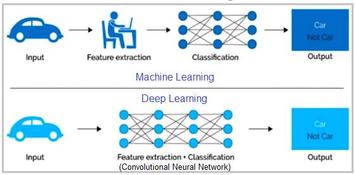Data Mining Tutorial: Basics Explained
Advertisement
This tutorial covers the fundamentals of data mining, including its architecture, how it works, real-world applications, and the benefits it offers.
What is Data Mining?
Data Mining is the process of extracting valuable knowledge from large datasets. Think of it like searching for gold in a mine – you sift through tons of sand, stones, and dust to find the precious metal.
For example, imagine searching for mobile phones with specific features and prices on Amazon or Flipkart. Or consider searching for a specific pattern or query on Google. These are examples of data mining, where we extract data of interest from massive databases or data warehouses.
Data mining utilizes search algorithms, tools, and techniques to provide excellent user performance. Many companies are developing software tools to deliver data analytics in various forms. Some major data mining tools include SPSS Clementine, IBM’s Intelligent Miner, SGI’s MineSet, and SAS’s Enterprise Miner.
Data Mining Applications or Use Cases
Data mining has a wide array of applications across different fields:
- Banking: Approving loans or credit cards based on predictions of customer behavior derived from historical data.
- Customer Relationship Management (CRM): Identifying customers likely to switch to a competitor.
- Targeted Marketing: Identifying potential customers who are likely to respond to promotional campaigns.
- Fraud Detection: Identifying fraudulent activities in telecommunications or financial transactions from online streams.
- Manufacturing and Production: Automatically adjusting process parameters based on real-time changes.
- Medicine: Predicting disease outcomes and the effectiveness of treatments. Analyzing patient history to find relationships between diseases.
- Molecular/Pharmaceutical: Identifying potential new drugs.
- Scientific Data Analysis: Discovering new galaxies by searching for sub-clusters in astronomical data.
- Website/Store Design and Promotion: Understanding visitor preferences and modifying website layout accordingly.
The Data Mining Process
The data mining process typically involves the following steps:
- Data Selection: Choosing the relevant data for analysis.
- Pre-processing (Cleaning): Removing inconsistencies, noise, and irrelevant data.
- Transformation: Converting data into a suitable format for mining.
- Mining: Applying algorithms to extract patterns and knowledge.
- Result Evaluation: Assessing the significance and usefulness of the discovered patterns.
- Visualization: Presenting the results in an understandable format.
Data Mining Architecture: How it Works

Figure 1: Data Mining Architecture Working
Let’s illustrate with an example: searching for a smartphone in the ₹10,000 to ₹15,000 range on Amazon.
- Data Sources: The architecture begins with data sources such as databases, data warehouses, the World Wide Web, and other repositories.
- Data Cleaning, Selection, and Integration:
- Data Cleaning: Removes unwanted data and noise using parsers.
- Data Selection: Isolates the data of interest from the larger dataset.
- Data Integration: Combines and aggregates data, storing it in a database.
- Data Warehouse/Database Server: Serves user requests by finding, extracting, and providing relevant data. This constitutes the “data mining request.”
- Data Mining Engine: The core module, performing tasks like characterization, prediction, association, correlation analysis, classification, and clustering. It interacts with the database, knowledge base, and pattern evaluation modules.

Figure 2: How Data Mining Works
- Pattern Evaluation: This component focuses the search based on user-defined patterns. If the query matches a previous one, results are retrieved from the knowledge base. This knowledge base stores results of previous searches, streamlining future queries. The process of building this knowledge base involves extracting target data, pre-processing, transforming, finalizing search patterns, and storing results.
- User Interface: Allows users to pose queries to the data mining system, such as searching for smartphones within a specific price range. The architecture then handles the rest.
Benefits or Advantages of Data Mining
Data mining offers significant benefits for both individuals and organizations:
- Fraud Detection: Identifying fraudulent transactions based on user behavior and data patterns, aiding banks and financial institutions in issuing loans and credit cards.
- Targeted Advertising: Identifying potential customers for products through relevant advertising campaigns based on their past purchases and search patterns. This increases sales and benefits customers, advertisers, and marketing companies. Search engines like Google leverage this extensively.
- Improved Retail Layout: Optimizing the layout of retail and grocery stores based on customer feedback and purchase history to place the most popular items in high-traffic areas.
- Product Search Optimization: Enhancing the search and selection of products on e-commerce platforms like Amazon and Flipkart.
Advertisement
 RF
RF





